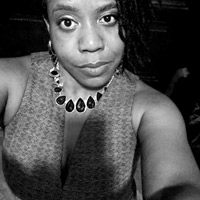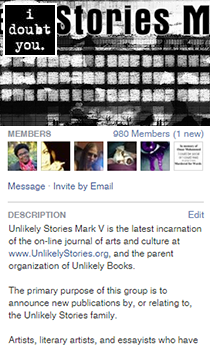The Women and Origins of Black Lives Matter
It’s almost cliché to say now, but fighting patriarchy without stating that you’re fighting patriarchy—or even knowing that you are—is quite common among people who are its biggest victims.
The Vietnamese nail salon workers who fight toxic chemicals at work; the Latinas hunger striking in immigrant detention; the Native women forcing the American justice system to quit allowing non-Native men to rape them on their land; the South Asian and Arab women walking, working, and worshipping despite their Islamophobic, ignorant, White supremacist neighbors; the Black women plugging up the school-to-prison pipeline—all of these women are fighting American patriarchy without saying so.
I have seen over and over in my own life how women do this work while dodging or not recognizing their feminisms. As a Philadelphian, raised Black Nationalist, educated at a historically Black institution that was not Spelman, and defined by hypermasculine hip-hop, I was ambivalent about being categorized this way for all of the usual, pre-internet reasons—perceived isolation from other Black people and being caricatured as a disloyal shill for liberal racist White ladies.
My lips, so accustomed to spitting out “White supremacy” and “racism,” never once considered “patriarchy” as a way to explain why things were so fucked up for people who were not White, heterosexual, able-bodied, traditionally masculine, cisgender males with money. This was true even as I saw the women closest to me doing feminist work.
My mother, who frequently declared herself a womanist, was a founding member of the Philadelphia Black Women’s Health Project and a Malcolm X legacy-preservation group for women called Sisters Remember Malcolm. When she was given an opportunity to take a women-only “fact-finding mission” in Bluefields, Nicaragua, there was no question that our father would be on his own with us for weeks.
The only grandmother we knew co-raised six kids while cleaning floors and then went on to become a social worker, anti-gentrification activist, and the one member of the Philadelphia Planning Commission who would “fuck you up” if your racist/sellout/trifling ass ever tried it. Perhaps to keep things interesting, this hellion-for-good still had outrageous ideas about housework that once led to my sister and me cleaning up after a male cousin our age.
This side of my grandmother, and the contradictory side of my mom that did all of the ironing and cooking, was where I burrowed. Moynihan Report be damned; we were strong Black women who could still keep a man. On its face, that was a sad measure. Even worse, without the anti-patriarchal label, what you get is a bunch of “strong Black women” doing so much unacknowledged labor.
As a kid, I watched this dynamic play out at innumerable early- and mid-1980s programs about freeing South Africa, political prisoners, and our minds. It was the women running around buying gallons of apple juice, typing up the flyers, cleaning the rooms, making sure the speakers got there, and providing the child care. That invisible labor made it possible for families to luxuriate in our Blackness.
This is not to suggest that the men didn’t work hard at those community programs. They’d do security, lift tables, play drums, drive vans, and shame us sellout kids hiding in the back watching Grease. But I also remember how so many of them, regardless of expertise, would lecture everyone about what we as a people needed to be doing. They’d sometimes use Black women’s chemically processed hair, single-mom households, and lesbianism as evidence of our destruction. The men also led most of the demonstrations, made most of the speeches, wrote most of our “conscious” books, and owned the stores that sold them.
As I got older, it was these men who would accost me in the street to condemn my treasonous perm and (fake) gold. They’d announce without prompting that abortion was Black genocide. They’d accuse women of passing over decent Black men because they were gold diggers who secretly wanted White boys.
They did so much telling!
But for all of my frustrations—which extended through college and my time as a hip-hop-focused journalist—I never called the suffocation and policing that I felt patriarchy. And that omission of “patriarchy” turned feminism and women’s work into singular examples of heroism rather than important interventions that struck at the heart of all of the more popular isms such as racism.
Which brings me to the Black Lives Matter creation story that I believe is worth retelling, even to “movement” people like us.
In the piece, the Oakland-based special projects director for the National Domestic Workers Alliance explained how she and anti-police-violence activist Patrisse Cullors created the #BlackLivesMatter hashtag on July 13, 2013, the night George Zimmerman was found innocent of murdering Trayvon Martin. It also recounted how fair-immigration advocate Opal Tometi joined them in spreading the message and building the Black Lives Matter network. Garza spent much of the piece outlining how other organizations were appropriating their work and replacing “Black” with other descriptors including “our,” “migrant,” and “women’s.” She described the theft and distortion as heteropatriarchy.
As a Colorlines editor, I was spending most of my days hyperfocusing on extrajudicial violence against Black people. Exhausted, I saw the history as a thousand more words I had to read.
I should have known better.
I should have understood that mainstream media was going to omit the founders, two Queer, one not, because the leaderless social-media-as-movement story was a lot sexier than the one about Black women doing cross-movement, uncompensated labor.
And I certainly should have predicted how the master’s evaluation tools—mainstream media coverage, large social media followings, and meetings with powerful people—actually aided patriarchy by essentially erasing the Queer and Black feminist politics at the center of Black Lives Matter.
For the record, Black Lives Matter, like Occupy, has national leaders who don’t dictate policy or strategy or even have titles. Its structure coalesced in August 2014, when Cullors and the Black Gay organizer and writer Darnell Moore planned regional “Freedom Rides” that brought about 500 people (including this writer) to Ferguson over Labor Day weekend to give the incredible local organizers and protesters whatever help they asked for.
I left from New York City, and during the 21-hour bus ride, Moore and others stressed a central theme: that all Black lives matter regardless of gender expression or sexuality. They said it on the mic, during prayers, onstage, and during our march to the Ferguson police station.
That weekend, I met two 20-something Black Transwomen who said they’d never felt welcome at race-focused protests. I listened to a radical Black male pastor who drove the point home that all Black lives are blessed. I also briefly encountered Johnetta Elzie, a Ferguson protestor and prolific Twitter user who was traumatized by both the militarized policing of her community and online insults from a Black former pimp who calls women “Negro bed wenches.”
Out of the Freedom Rides emerged the local, chapter-based Black Lives Matter network, one in a constellation of organizing and direct action groups including the Dream Defenders, Million Hoodies Movement for Justice, and Black Youth Project 100.
This isn’t a complicated story, until you consider how mainstream media unceasingly identifies two men with enormous social media presence—Shaun King and DeRay Mckesson—as Black Lives Matter leaders despite the fact that they don’t belong to the group.
King is a former pastor and social enterprise CEO turned New York Daily News columnist with more than 240,000 Twitter followers. DeRay Mckesson is an openly Gay former Teach for America administrator and a former 2016 candidate for Baltimore mayor. He became famous by live-tweeting protests in Ferguson and other police-violence hotspots. This February, he was one of a small group who met with President Barack Obama at the White House.
There are factions of the overall movement that publicly accuse King and Mckesson of capitalizing on the struggle and sabotaging the work of more “real activists” with a combination of political naiveté and self-centeredness. I won’t address either side since the only one I’m on is the one where Black people don’t broadcast movement drama on social media.
If we are to grow and replicate new anti-patriarchal movements like Black Lives Matter, we need to do it with a clear and immediate recall of how they began. As a Black woman who knew about Alice Walker, bell hooks, and Angela Davis, but somehow missed Pauli Murray, Anna Julia Cooper, Kimberlé Crenshaw, and so many others, I’m vigilant about saying names. This remains the case even as an increasing number of young Blacks are claiming the feminisms of pop culture icons such as Rihanna, Nicki Minaj, and Beyoncé. These women didn’t come from Wonder Woman’s fictional island of Themyscira. They emerged in tandem with the enormous work of Black women who confront mass incarceration, poverty, sexual exploitation, poisoned tap water, police violence, and myriad other issues.
We should all know that Black Lives Matter started the night George Zimmerman got away with killing Trayvon Martin. After hearing the verdict, Garza used the phrase “Black Lives Matter” in a Facebook post. “Black people. I love you. I love us. Our lives matter, Black Lives Matter,” she wrote.
We should all know that her friend Cullors turned the phrase into the #BlackLivesMatter hashtag and began using it on the walls of friends and comrades. As Jamilah King reported in The California Sunday Magazine, Cullors wrote on Garza’s wall, “twin, #blacklivesmatter campaign? can we discuss this? i have ideas. i am thinking we can do a whole social media/all out in the streets organizing effort. let me know.” The two friends agreed to start a protest movement under the Black Lives Matter name, and they soon enlisted Tometi, another friend.
I’ll stop recounting here. This is a book that demands to be written. Evaluating the influence, value, and creativity of people’s work—particularly if they are women of color—is trickier than ever. News coverage isn’t straightforward, and social media privileges people with high-speed internet access and innate marketing skills. And we still have the often unpaid laborers who perform thankless movement tasks because no one else will. At the very least, we can double down on the names of those we do know.
Akiba Solomon wrote this article for Gender Justice, the Summer 2016 issue of YES! Magazine. YES! Magazine is published under a Creative Commons Attribution-NonCommercial-NoDerivs 3.0 license. More information is available at their Reprints page.

Akiba Solomon is the editorial director of Colorlines. She has served as a health editor for Essence and has written for Dissent, Glamour, EBONY, and VIBE Vixen, among other publications.


